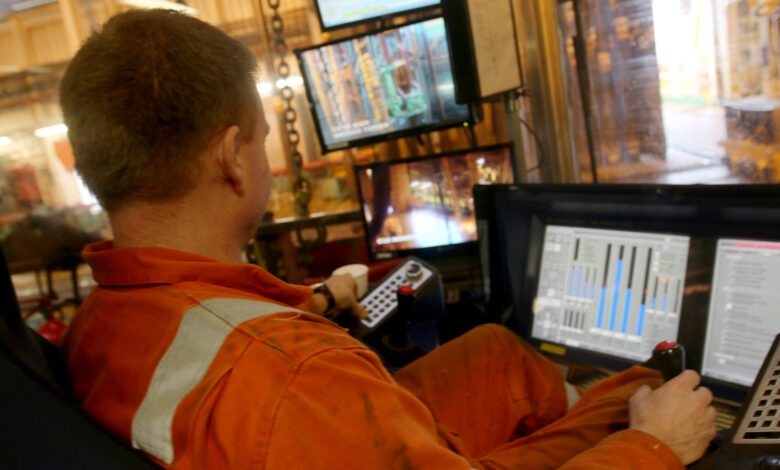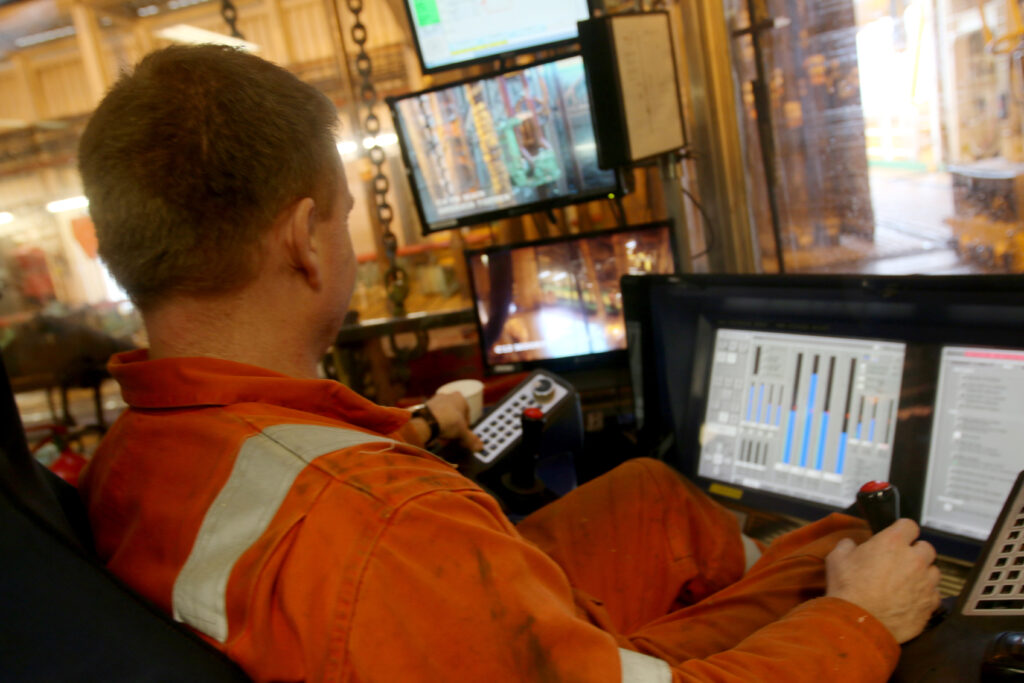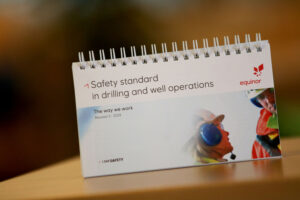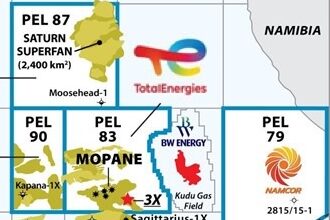Changing landscape calls for industry to embrace new ways of working, transition to a lower-margin business

Equinor’s Erik Kirkemo: Companies can prepare for the future by leveraging digital solutions, prioritizing emissions reductions, staying proactive on safety
By Linda Hsieh, Editor & Publisher
Erik Kirkemo is Senior Vice President Drilling & Well at Equinor.
From your perspective at Equinor, what do you see as the key challenges right now in terms of drilling and completions?

First and foremost, safety must still be the top priority; it remains fundamental to everything we do. Our No. 1 priority is to ensure we do everything we can to prevent major scale accidents and injuries to people and the environment. With that said, COVID-19 continues to be a huge challenge for the industry, from supply chain to business continuity to costs, and even the toll that it is taking on people. Combined with lower oil and gas prices, the situation is extremely challenging, not just for operators but also for contractors and the service industry.
I think that, as an industry, our challenge now is to make a transition to a lower-margin oil and gas business, which has to be done while improving safety and while making significant reductions in carbon emissions. We all need to use this time as an opportunity to review ourselves, to embrace digital solutions and new ways of working. In essence, we need to unlock the potential of our people, technology and assets; it’s key to future value creation.
You mentioned moving to a lower-margin business, but it seems like over the past five to six years, the industry has already pushed cost down as much as possible?
Cost tends to have a very negative connotation. I prefer to look at it more from an efficiency standpoint, and I believe there’s more efficiency to be gained. As we become more efficient, cost will come along with it. Being a lower-margin industry means you need to be extremely efficient so there’s less value “leakage” along the way.
This may be more applicable for offshore, as I think the onshore business has been a lower-margin business for a longer time. But within offshore, we need to adjust to having lower margins going forward whilst keeping a proactive approach to improving all aspects of safety.
How has the pandemic changed the way you work at Equinor, perhaps in the long term?
Even before we were hit by the pandemic, we had already been preparing for new ways of working. This includes implementing integrated contracts and searching for synergies in different roles on the rig. We had also already invested heavily in integrated operations (IO). We’re already running a number of rigs on the IO3 level, and we’re planning to add more rigs to this way of working. Essentially, this means moving some key roles to operations centers onshore and not having to transport them out.

It seems like we had already paved the way before the pandemic, so that we were able to quickly realize these efficiencies when COVID-19 forced us to cut down on seats in helicopters and to do tasks more remotely.
I remember the day when everybody was sent home from the office. Overnight, we stopped traveling and started using the digital tools and technologies we already had in place to collaborate.
Personally, I was also able to go on a number of rigs last year without actually going on a helicopter – I visited probably 10-12 rigs last year virtually. Sometimes I can visit two rigs a day, something I could never do before. I can provide the same messaging, meet with people and have good conversations. Some rigs can even show me around virtually.
I think COVID-19 has really changed our way of working. I don’t think we will only be working digitally in the future, but it has become a more normal way of working. People who didn’t have to do things virtually before are realizing it’s not such a bad idea after all.
For example, do you really need to have a subject matter expert take four days out of his or her schedule to travel from Stavanger to the US to do a one-hour test? You really start to think about the different ways you can deploy your competencies without actually moving your physical presence.
I think that has been quite positive in many ways and is something that we will continue doing after COVID-19.
While increases in both the world’s energy demand and oil prices could pull our industry out of this current downturn, we are unable to influence those factors. So, what do you see as the top things that E&P companies could be doing in the current environment to increase the profitability of their oil and gas wells?
I think it is key that we continue to leverage what this pandemic has taught us and continue driving new ways of working and use of technology. This also ties back to what I said about moving to a lower-margin and lower-carbon business. This means having safe and efficient operations, low nonproductive time and increased quality in everything we do.
We must also continue to renew ourselves by using connected, digital technologies to improve our work processes. Our work will be much more data-driven going forward, which will necessitate changing roles and responsibilities. We must accept that. Engineers, for example, may have more data gathered for them so they can focus more of their time on optimization.
Additionally, there has to be more focus on what we get out of our investments and whether the improvements are big enough and if they’re coming fast enough.
What about for drilling contractors? What would you like to see them do to help operators in these efforts?
First and foremost, never let your guard down when it comes to well control and well integrity. That’s fundamental.
On top of that, the future will also demand more efficient machinery and rigs that produce far less CO2. We already evaluate rigs based on efficiency and safety, but CO2 emissions will become a key criterion to a greater extent going forward. Rigs with automation technologies will eventually be the most efficient ones, and preferred.
I also think contractors can give more attention to the total well delivery. From our perspective, the whole well delivery starts the minute the rig is on location. You have the operator, the rig contractor and other service companies all on the rig, and everything they do is interdependent. You have to be integrated and work together to drive efficiencies.
At Equinor, we refer to that collaboration as One Team, and the total well delivery is the totality of everyone’s collaboration with each other. For example, if the rig machinery goes down, the main service provider will also be affected. In the past, the service provider would have been paid regardless. Today, we are all part of the well delivery. When one does well, everybody does well. If one does poorly, all of them suffer.
You spoke at an IADC conference last October about the importance of having a strong safety culture to ensure well control. Do you have any insights into what organizations can be doing to reinforce that safety culture and focus on well control when there’s so much worry about other factors like COVID-19 and the downturn?

First of all, I believe people truly perform at their best when they feel trusted and they feel cared for. And when they feel that they are part of something important that is being delivered all together, that is the best starting point for a good safety culture.
Secondly, we can never let down our guard. From a major accident perspective, well control must be the main priority. Many people on rigs today have never actually experienced a well control incident, which is a good thing, of course. But when you’ve never experienced something, it tends to sit in the back of your mind, and we know well control must always be at the front.
We have to promote openness amongst crew members. There are a lot of things going on on a rig, and we depend on the mental presence of people. You need to have a culture where it’s OK to speak up or to say stop when you see signals. Because there’s always time to do the right thing.
You mentioned earlier the importance of renewing ourselves and embracing digital technologies. But now, with so many companies lacking access to capital, do you think that investments in those technologies will be scaled back? If so, how will that impact our performance in the coming years?
I think it would truly be a big mistake to cut back on those investments. If a company is not investing in digital solutions today, they will go into the future with a disadvantage. You have to look at digital as an investment that makes you more efficient and, ultimately, reduces costs.
At Equinor, we will choose to work with companies that have the ability to invest, and we believe in performance-incentivized contracts. So, the more efficient you are, the more you earn. I think that will be an important driver to continue investing in technologies that make you safer and more efficient.
How do you think operators and drilling contractors can better work together to accelerate the adoption of new technologies?
I think we shouldn’t be afraid of sharing experiences and lessons learned with each other, out of fear that somebody is going to take your competitive advantage. One thing is having the technology – the other part is having people who know how to use it.
We should also work together to have a firm implementation map when developing new technologies. We need to be concrete on what to implement and where. I’ve seen personally how important it is to give the driller the assurance that we’ve got your back with this new technology. You don’t have to hold back, because the technology is here to help you. But if you don’t trust the technology and you continue to operate the same way you used to operate when you didn’t have the technology, then you’re not realizing its potential value.
We have actually seen a couple of examples where we thought a technology had a certain business case, but once people got comfortable with it and they actually started using it, they found there was a wider range of applications than we previously thought. Those things are quite exciting to see when they happen.
We should also have a mindset of broad implementation, rather than one-offs. The entire investment is not going to be recouped in one implementation. We should be coming together to share experiences and standardize, even on the new technologies.
When you talk about the need to share more experiences, does that include data collected at the rig site? How can the industry approach that debate of who owns what?
That’s why it is so important that the industry standardize on how to set this up. A common format and open architecture are prerequisites for effective exchange of data. The industry has long-standing experience with the WITSML format, and new initiatives like the Open Subsurface Data Universe (OSDU) will enable different companies to broaden machine-to-machine communication of key data.
From your perspective as an operator, what do you see as the top things that a contractor could do in the coming year to make themselves and their rigs more competitive?
A contractor might have good rigs, but they also need good people, good standards, a solid performance and compliance culture and technical know-how. They need good leadership that can set a clear strategy and clear goals to lead to step changes in performance. And, of course, don’t cut back on maintenance.
Even if the market is not allowing newbuilds right now, there are still a lot of interesting things that can be done with retrofit solutions to advance automation and lower carbon emissions. With rig control systems, they could be moving toward more autonomous operations, so that we can get a closed loop from digital planning, digital well design and execution of all the functions using an automated system. I’ve also seen some interesting battery technologies where they take advantage of hoisting operations to charge the batteries and lower fuel consumption.
We know that Equinor has been very aggressive in investing in renewables and low-carbon solutions, while maintaining its focus on oil and gas. Are there any learnings you have been able to take from the renewables side of your business to improve oil/gas operations?
Yes, many of the big technology developments that are under way within Equinor for renewable energy can also help us to reduce emissions from drilling rigs. I believe we can go a long way if we look at alternatives to traditional fuels, like hydrogen and ammonia, or the electrification of jackups and other mobile rigs. A lot of our platforms on the NCS are already starting to become electrified. These can all lead to significant reductions in emissions.
There are also interesting projects with renewable power production from wind, for example. Our Hywind Tampen project will be the world’s first floating wind farm to power offshore oil and gas platforms. Maybe one day you will see these solutions with a mobile rig, as well.
Our CEO has been very clear about Equinor becoming a broader energy company, but also that the world needs both renewables and the more traditional oil and gas. We believe we can find and benefit from synergies between the two.
Do you have any advice for what drilling contractors should be doing now to prepare for ESG-related requirements they may see in the near future when they market their rigs?
There needs to be more focus on cutting emissions, and I think it starts with knowing your own numbers. Then you can see if you have efficient energy management on the rig and figure out how to approach reducing fuel consumption. Without a doubt, the level of emissions will be more central in evaluation of new rig contracts in the future.
If you operate on the NCS in Norway, there are subsidies and other mechanisms that companies should look into that can help them become greener; similar mechanisms may be available in other parts of the world, so companies should be looking into what’s available.
If we look at the completions part of the well construction process, what do you see as the biggest opportunities for making performance improvements? Are current completion capabilities limiting how you develop your fields?
I think we can achieve even more standardization within completions, which would reduce complexity and risk. We shouldn’t be putting more equipment into the well than what we need. The longer the wells are, the more nonproductive time there is. There’s also an opportunity for more automation. We see a lot of automation around the drilling and production phases of the well, but not so much in the completion phase.
In terms of limits on field development projects, I don’t think we are being limited. It’s more about the volume of oil and gas in the reserves that you’re targeting. The more expensive and complex the completions are, the higher risk you put on the project and the greater need you have for a successful installation. The investments may become too high in relation to the chance of success. So, you do need to look at the overall complexity and find solutions to reduce the implementation risk. Obviously, if you can’t get the completion in there, there was no point in drilling the well. DC




